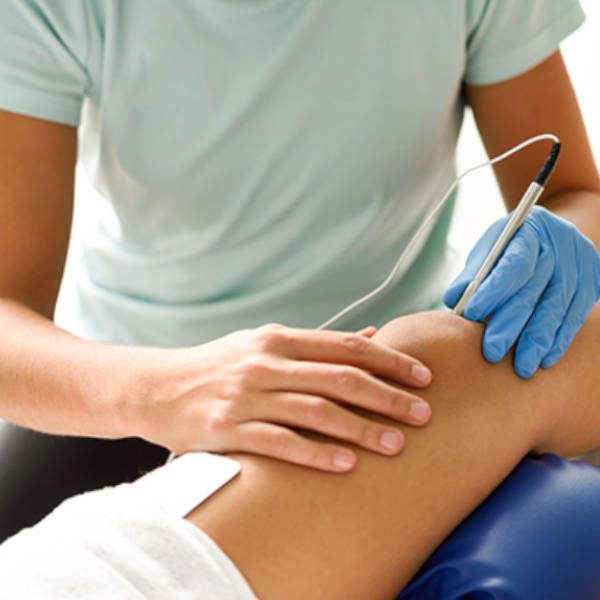Knee pain can be caused by a sudden injury, an overuse injury, or by an underlying condition, such as arthritis. Treatment will vary depending on the cause. Symptoms of knee injury can include pain, swelling, and stiffness. Most people experience knee pain at some point in their lives. Sports, exercise and other activities can cause muscle strains, tendinitis, and more serious injuries to ligaments and cartilage. For some, knee pain can be so severe that it limits daily activities. For others, mild knee pain may be a chronic hindrance to the active lifestyle they desire. In either case, chances are that you’re dealing with a knee problem that shouldn’t be ignored.
Knee Treatments
Knee Treatments
Visit Polaris hospital if:
- The hurt limb or joint looks odd in a strange shape or is out of its normal position.
- The skin over the site of an injury is broken.
- You have signs of nerve or blood vessel damage, such as:
- Numbness, tingling, or a pins-and-needles feeling.
- Skin that is pale, white, or blue, or feels colder than the skin on the limb that is not hurt.
- Not being able to move the limb normally because of weakness, not just pain.
- You cannot put weight on or straighten a hurt limb, or joint wobbles or feels unstable.
- You have severe pain.
- You have a lot of swelling within 30 minutes of the injury.
- Swelling and pain do not improve after 2 days of home treatment.
- You have signs of infection after an injury. These may include increased pain, swelling, warmth, and redness; red streaks leading from the area; and fever.
Knee Ligament Injuries
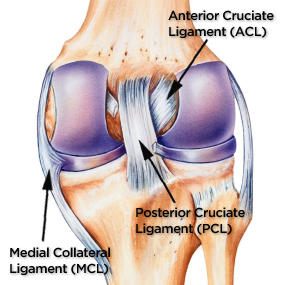
The ligaments are what connect your thigh bone to your lower leg bones. They hold your bones together and keep the knee stable. Knee ligament sprains and tears are very common sports injuries and can occur to the anterior cruciate ligament (ACL), posterior cruciate ligament (PCL), and medial collateral ligament (MCL). Any of these injuries can result in severe knee pain and could require surgery.
Knee Cartilage Tears
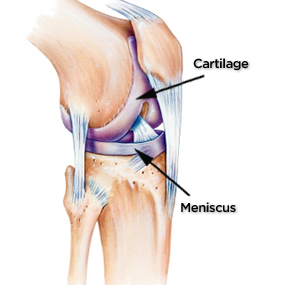
Other injuries, including tears, can take place in the cartilage of the knee. Cartilage is a semi-hard (tough, but flexible) tissue that covers the end of your bones. Knee cartilage comprises the two menisci on either side of the joint: the medial meniscus, located on the inside of the knee and the lateral meniscus, positioned on the outside of the knee. You’ve probably heard the phrase “meniscus tear”. A tear in the knee cartilage is a common injury and typically requires surgery.
Arthritis of the Knee
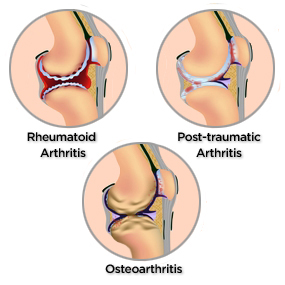
Arthritis is a common cause of severe knee pain and disability. Unfortunately, arthritis is a chronic degenerative condition that can eventually require surgery. The three most common types of arthritis are rheumatoid arthritis, post-traumatic arthritis, and osteoarthritis. In the case of any of these three, you may experience stiffness and swelling, and it may be hard to bend your knee.
Osteoarthritis of the Knee
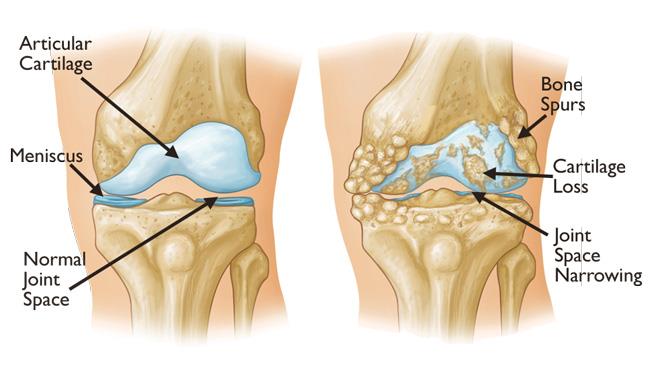
The most common type of arthritis is osteoarthritis, which is a progressive wearing of the cartilage in the knee joint. It occurs more frequently in individuals 50 and older. After 50, the impact of osteoarthritis can worsen due to accumulated use and the wearing down of cartilage that occurs with age. Osteoarthritis of the knee causes pain, limited range of motion, stiffness of the knee, swelling of the joint, tenderness, deformity and weakness.
Causes of osteoarthritis include age, weight, genetics, previous injuries, infections, and illness (such as a tumor or gout). Osteoarthritis can also be caused by sports injuries and wear and tear resulting from physical work in occupations, such as construction and manufacturing.

